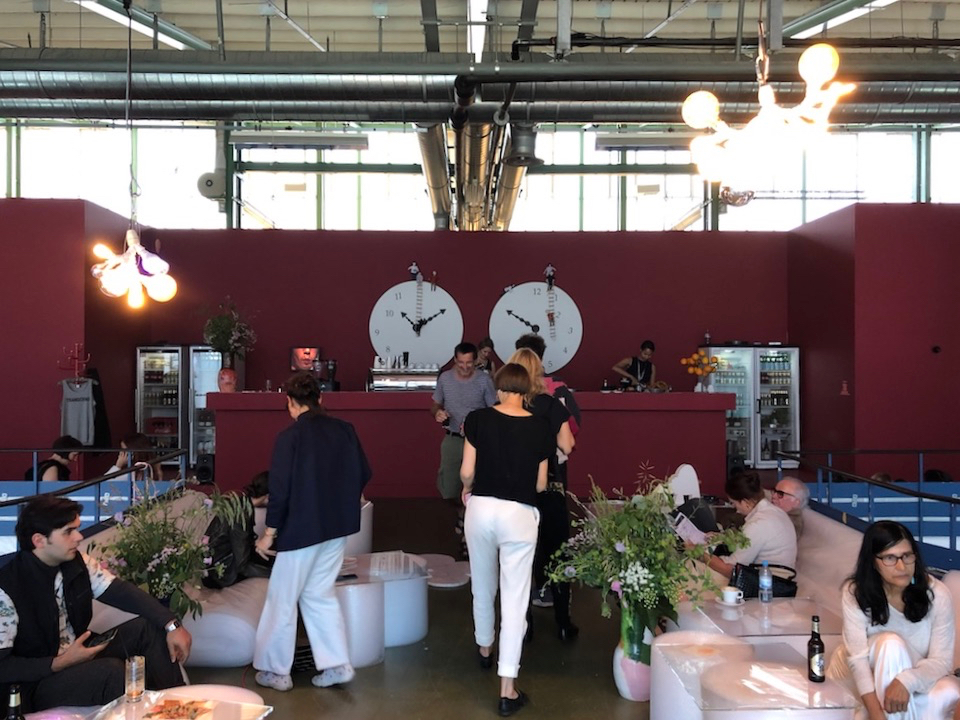[ad_1]
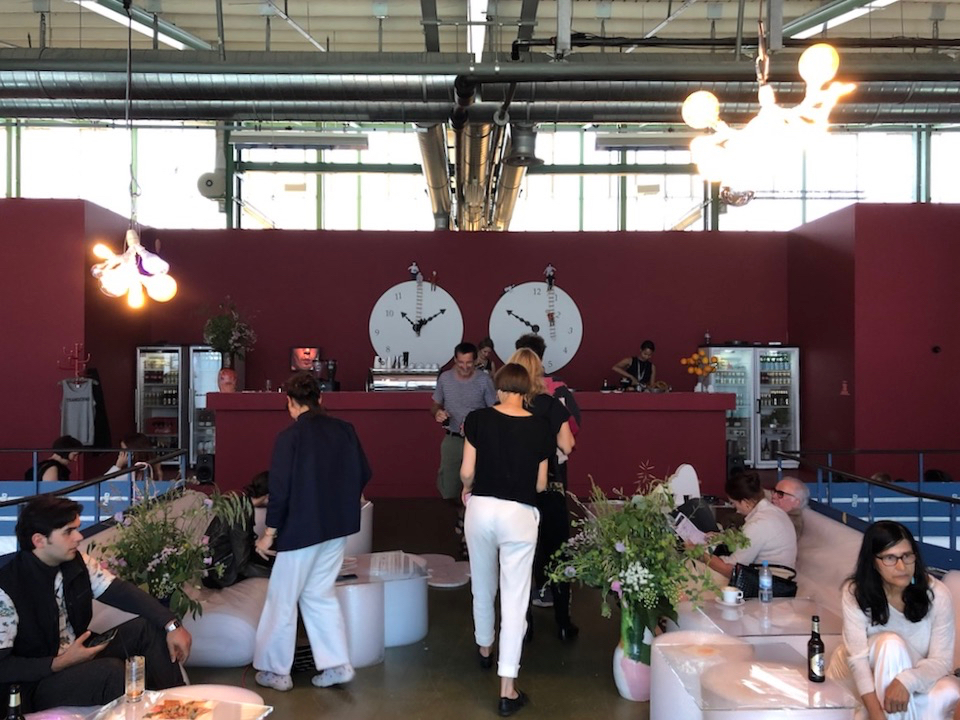
Hidden Bar, with clock piece by Mia Sanchez.
ALL PHOTOS: ANDREW RUSSETH/ARTNEWS
[Follow all of ARTnews’s continuously updated coverage from in and around Art Basel 2018.]
For Swiss artist Hannah Weinberger, this year’s Art Basel has been all about secrecy. In the Parcours sector of the fair, in the city’s Old Town, Weinberger has installed speakers beneath a number of sewer grates in the street that play bewitching compositions she created, and over in the convention center, she worked with friends to create a hidden bar at the invitation of Art Basel’s head honcho, Marc Spiegler. Naturally, it is called Hidden Bar.
The bar, which isn’t advertised on maps or through signage, has everything one might want while visiting a fair. There are cocktails—Negronis, Bloody Marys—and there are snacks—hummus, gazpacho, cake. There are also brews courtesy of the local outfit Ueli, whose mascot is a beer-proffering jester.
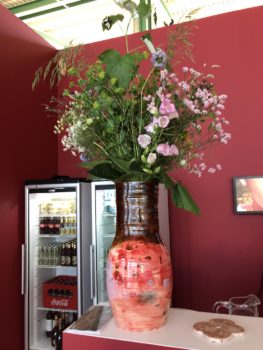
Vases by Claudia and Julia Müller.
And there is also a bevy of artworks, which Weinberger and her network of collaborators have placed around the area. “It’s always changing because a few things are disappearing,” Weinberger, who is based in Basel, told me, surveying the scene early on Friday afternoon as a few groups of people sipped coffees. “Some works got sold, and [buyers] took them with them. Although we’re not really selling, we’re just matchmaking.” (So, for instance, if someone expresses interest in a Stefan Tcherepnin work, Weinberger and her fellow artists point them to the booth of Zurich gallery Francesca Pia.)
There’s a hanging sculpture of a whale by Mai-Thu Perret on the steps leading to the bar, clock-like paintings by Mia Sanchez behind the counter, stone flowers on the floor by Bleta Jahaj (which are also available via Vienna’s Ermes-Ermes gallery), and one of Klara Liden’s garbage-can sculptures on the wall. Other works blend right into the bar atmosphere—or serve functional purposes. A Pamela Rosenkranz Evian bottle sculpture sits on a soda-filled fridge, Kaspar Muller has provided lights, each a menagerie of bulbs, Claudia and Julia Müller have done pretty ceramic vases that are filled with flowers, and the seating and tables—made out of big rolls of bubble wrap and sheets of glass—are not designs. “It’s actually artwork by Renée Levi,” Weinberger said, referring to the Basel-based painter. “Everything came together very spontaneously.”
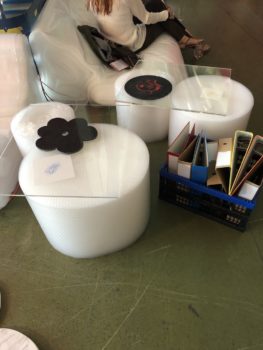
Tables and seats by Renée Levi.
Running a hidden bar for six days presents some unique issues. “It was difficult to plan because we didn’t know how many drinks we would sell or how much food we would need,” Weinberger said. Nevertheless, business has been proceeding apace, with word spreading quickly about the location of the speakeasy. (To reach it, enter the convention center through the main entrance, go directly to the right to have your ticket or card scanned, then take the stairs there all the way to the top. It’s near Parkett magazine’s booth, and not far from that of Gavin Brown’s Enterprise—another outfit with some experience in the bar business.)
A performance program is held at the bar from 5 p.m. to 7 p.m. each night, and it’s helped make people aware of the venture. (Saturday night, the Berlin-based British artist Juliette Blightman will be performing.)
Hidden Bar also sports some special amenities, like a water fountain, “and I also have to say that we have the best coffee in the fair, and the cheapest,” Weinberger said. (The
beans are roasted on site, and the price, she noted, is the result of not having to pay rent.)
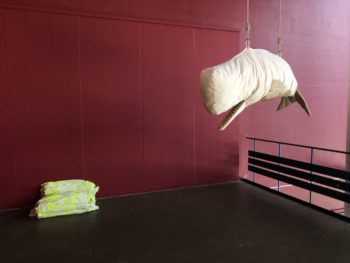
At right, a sculpture by Mai-Thu Perret.
Amid the hustle and bustle of Basel, Hidden Bar is a quiet, airy redoubt of calm, with light finding its way in from windows that look out onto the Messeplatz. “I used to work at bars [where] you’re used to having grumpy customers,” Weinberger said, but running Hidden Bar has been a decidedly pleasant experience, with not a single ornery patron all week. “Everybody has been very open and sweet,” she said. The success, she suggested, “has a lot to do with the people that are also here, working, because they’re artists—they’re friends.”
[ad_2]
Source link

